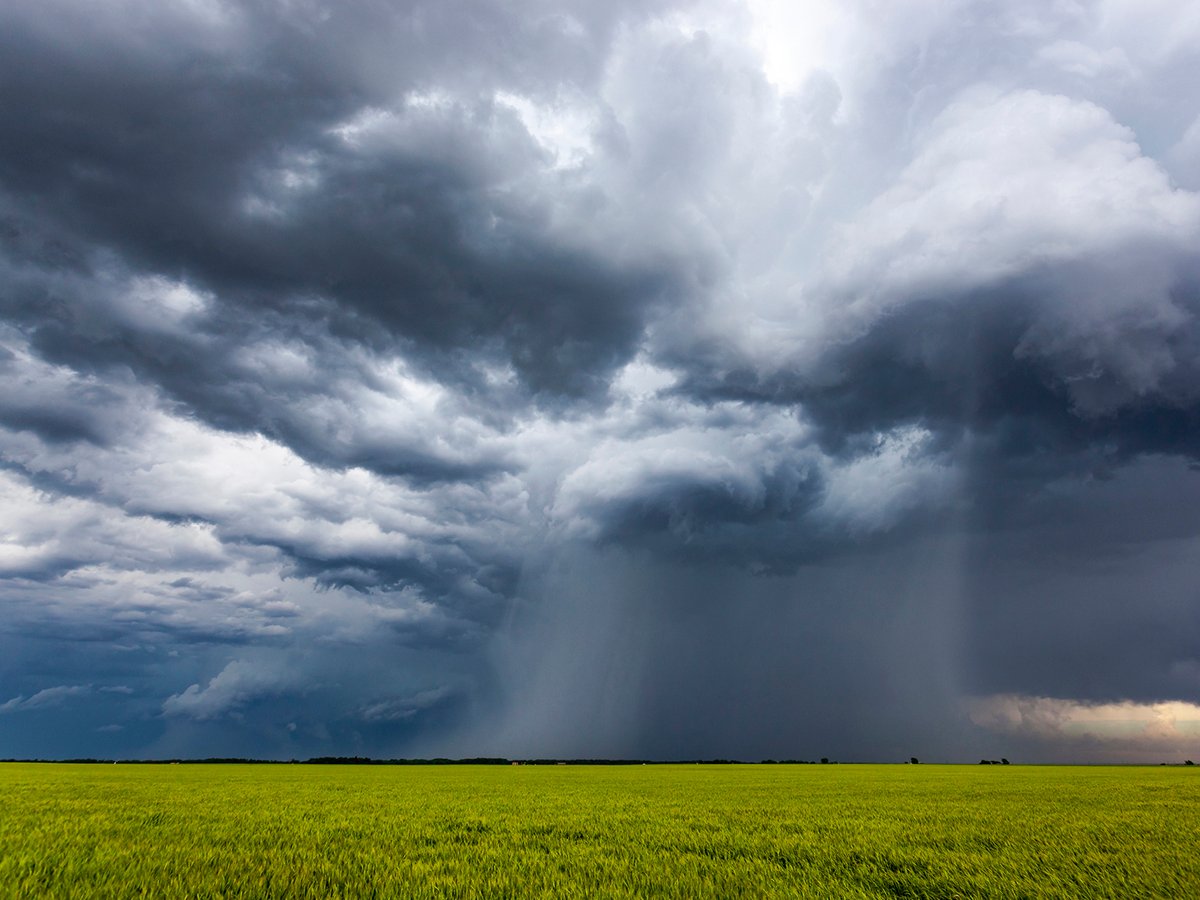RIMBEY, Alta. – People who gathered at a June 16 open house in Rimbey to talk about a new power line were wary of strangers and asked reporters for credentials before they spoke.
Their reluctance was based on last year’s discovery that the province’s Energy and Utilities Board (EUB) had hired private investigators to infiltrate landowner groups opposing a proposed 500 kilovolt transmission line project.
While their trust in the government and power companies may have been shaken, their demands remain the same.
“There is a solution if you want to find it. We’re not against electricity,” said Irene Lovell, who lives close to two 240 kv lines in west-central Alberta.
Read Also

Extreme rain increases as planet warms
In this issue, we are going to wrap up our look at extreme rainfall by examining the different weather patterns that tend to be associated with these rainfall events.
“We’re not loonies.”
What landowners want, she added, is for a new line to be buried. Better yet, she said, power companies should explore alternative sources of power rather than coal fired plants. She also said she wants utilities to listen with respect to people who live near power lines.
A new power line from north of Edmonton to south of Calgary had originally been proposed for western Alberta, but trouble began when the EUB held public hearings.
People protested, saying such a large project was not needed and that it should not run through one of the province’s most populated regions.
The EUB stopped proceedings and proponents of the transmission line were told to start from scratch with more public consultation and proposals more aceptable to landowners.
The Alberta Electric System Operator (AESO), which manages Alberta’s electrical grid, has responded by hosting 26 open houses to talk about the proposed line.
Opposition to the line comes in many forms.
Don Bester of Innisfail, the new president of the Alberta Surface Rights Federation, said the extra electrical capacity is not needed, especially if the power is exported to the United States.
“This is power for export and it will take a lot to convince me that my tax dollars should go in for exports,” he said.
The federation helps landowners settle compensation agreements with energy companies when they enter private land. In the case of electrical generation, people are paid for the space on which the towers sit.
Rimbey rancher Greg Troitsky said two lines run through his 100-year-old ranch and besides the nuisance factor of farming around the towers, he said there are health implications for his cattle grazing under the lines.
“We have a high rate of cancer eye around the power lines,” said Troitsky, chair of the United Power Transmission Area Group, a coalition of landowner and citizens groups formed to seek alternative routes that would have the least impact on people and the environment.
Troitsky wants the line buried and full public involvement in future development. He said his group has the stamina to go the distance in this fight and is fully funded if it has to go to court.
“There are so many people who hate what is going on that money is not a problem. We have proposals for them and if they work with us, there will be no lawsuits,” he said.
“We are not against progress but it has to be something we can all live with.”
Community leader Joe Anglin, head of the 800 member Lavesta Area Group, is credited with squashing the project earlier this year.
Anglin, who lives in Rimbey, said he accepts the assertion that more power is needed.
Anglin’s group would like to see a 500 kv DC transmission line built underground in eastern Alberta, which would make it possible to remove outdated 240 kv AC lines and increase the grid’s survivability and reliability.
However, he worries that despite this second round of talks, the line is a done deal and landowners will still be ignored.
“I’m nervous that they are just placating us and not really listening,” he said.















